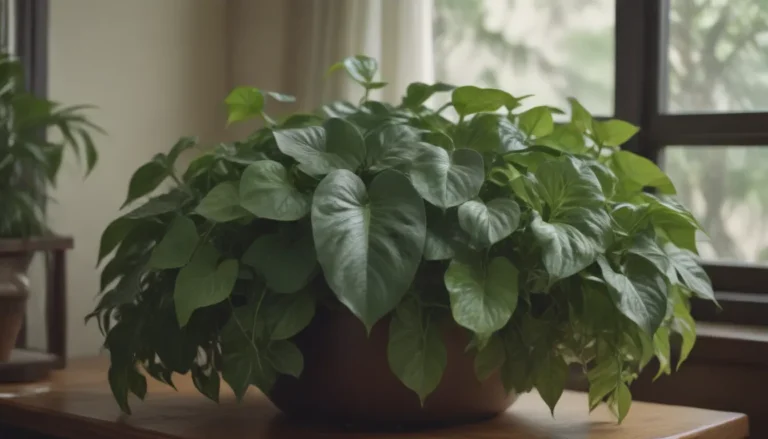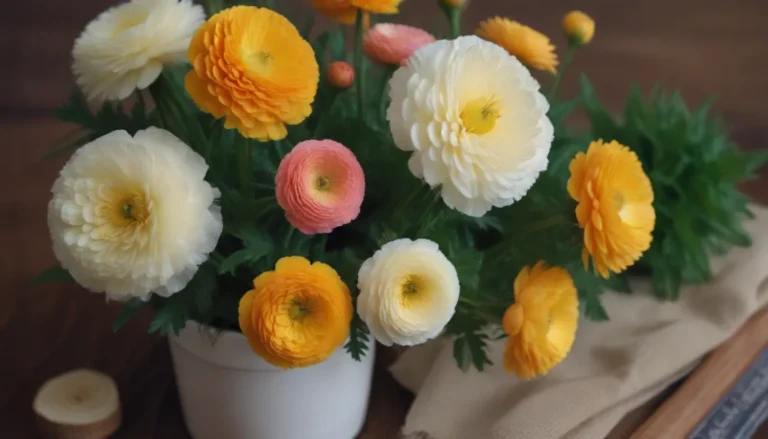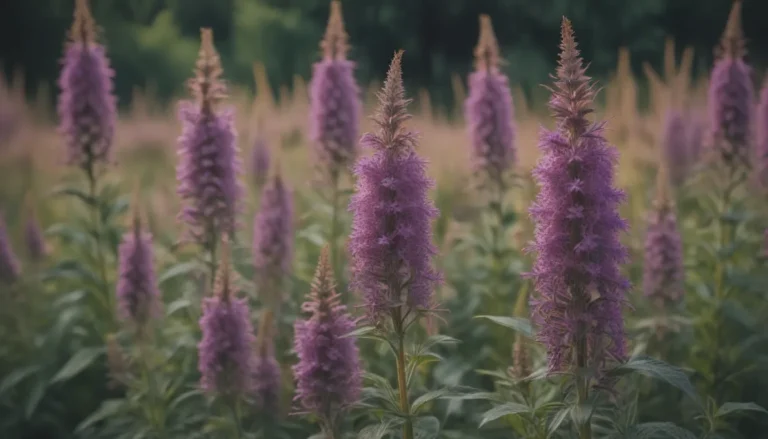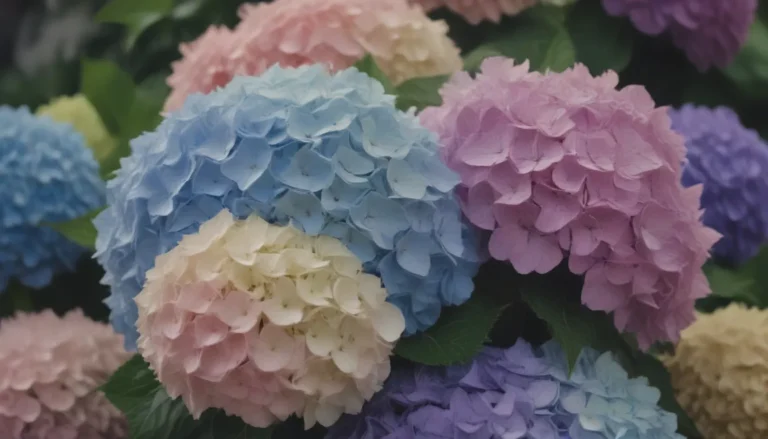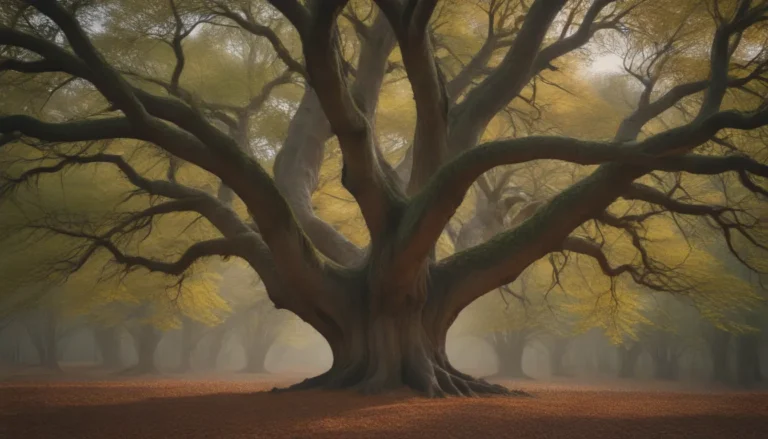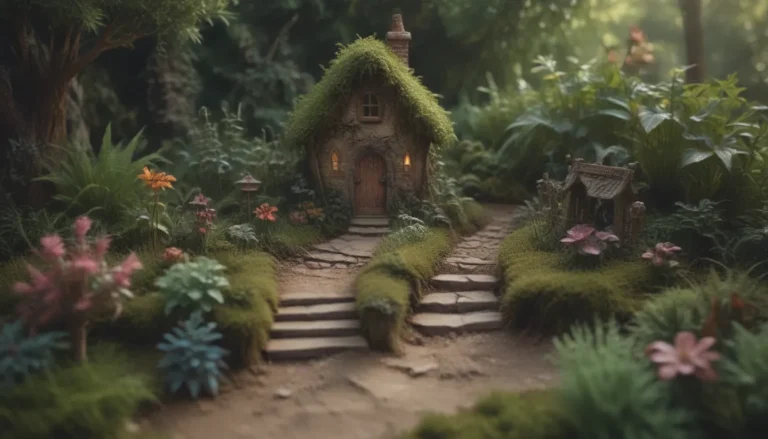27 Types of Daisies to Add Vibrant Color to Your Garden
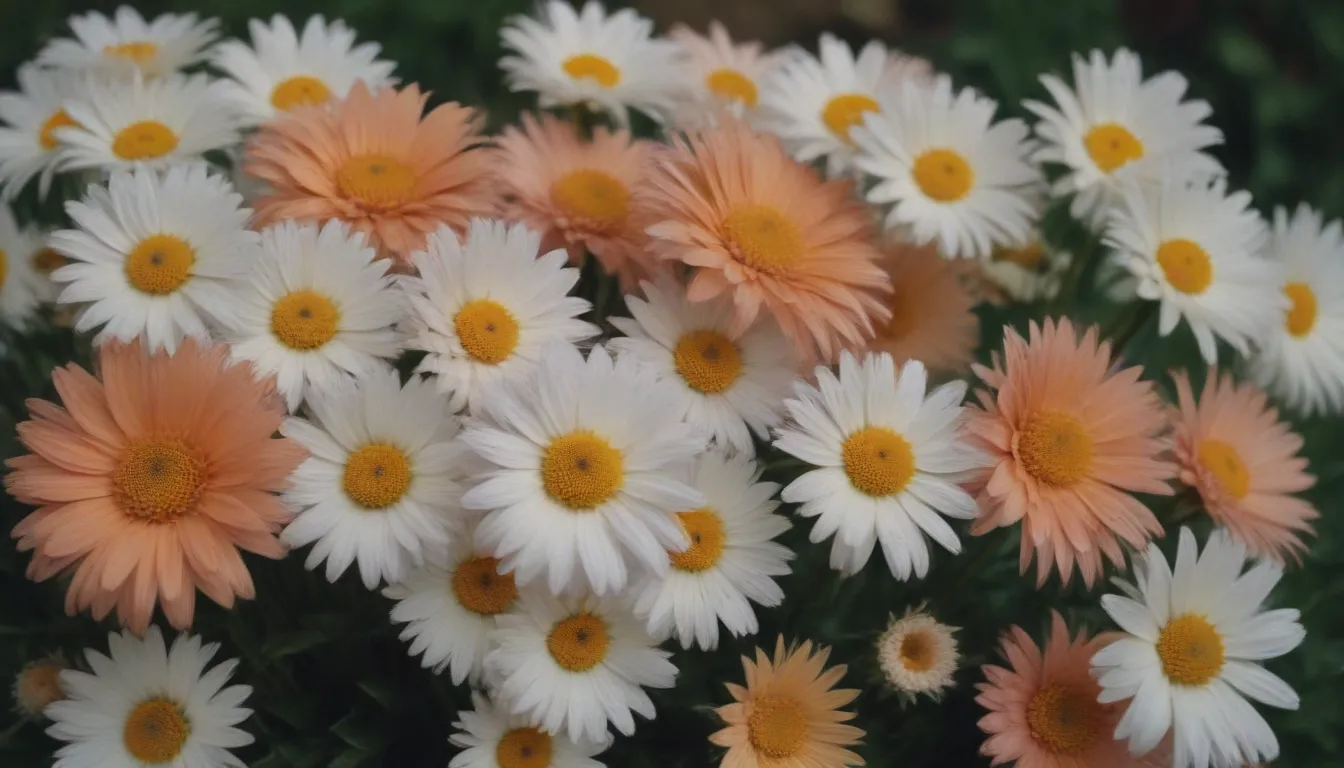
Are you looking to add a pop of color and cheerful vibes to your garden? Daisies are the way to go! These bright and beautiful flowers are not only easy to grow but also come in a wide variety of species and colors. From the classic yellow-centered daisies to the more exotic painted daisies, there is a perfect daisy for every garden. If you’re ready to transform your outdoor space into a vibrant oasis, keep reading to discover 27 gorgeous species of daisies to consider for your garden.
Getting to Know Daisies
Daisies belong to the Asteraceae family of plants, known for their flat, disc-shaped blooms with rays projecting outward from a central hub. With over 20,000 species of daisies found around the world, there is no shortage of options when it comes to choosing the right type of daisy for your garden.
When selecting daisies for your garden, consider factors such as your USDA Zone and sun exposure. By planting the right type of daisy in well-draining soil and during the correct season, you can ensure that your daisies thrive and bring joy to your outdoor space.
Warning:
Before you start planting daisies in your garden, it’s essential to note that some types of daisies are considered weeds and may be categorized as invasive in certain areas. Check with your local county extension office before introducing a new daisy variety to your garden.
1. English Daisy (Bellis perennis)
- Native Area: Europe
- USDA Growing Zones: 4-8
- Height: Low-growing
- Sun Exposure: Full sun to part shade
The common English daisy is known for its white petals and yellow centers. While it can be considered invasive in some areas, there are cultivars like ‘Galaxy Red’ that offer showier blooms and better behavior. English daisies are hardy in zones 4 to 8 but are often grown as biennials in warmer zones or as annuals in cooler climates. They make excellent ground cover plants and add a touch of whimsy to any garden.
2. Gerbera Daisy (Gerbera jamesonii)
- Native Area: South Africa
- USDA Growing Zones: Varies
- Height: Varies
- Sun Exposure: Morning sun
Gerbera daisies, also known as African daisies or Veldt daisies, are tender perennials best suited for warm climates. These colorful flowers make excellent additions to container gardens and are popular choices for cut flower arrangements. Look for varieties like the Festival series or the peach-hued Cartwheel Chardonnay for a burst of color in your garden.
3. Marguerite Daisy (Argyranthemum frutescens)
- Native Area: Canary Islands
- USDA Growing Zones: 8-10
- Height: Varies
- Sun Exposure: Full sun
With its vibrant yellow and pink blooms, the Marguerite daisy is a showstopper in any garden. While it thrives as a perennial in zones 8-10, it can be grown as an annual in other regions. Blooming best in spring and fall, these daisies provide repeating bursts of color throughout the season. Consider shearing them back in summer to encourage new blooms in the fall.
4. Oxeye Daisy (Leucanthemum vulgare)
- Native Area: Europe
- USDA Growing Zones: Varies
- Height: Varies
- Sun Exposure: Full sun to part shade
The oxeye daisy, while considered a weed in some areas, offers a three-month bloom time and a delicate beauty that is hard to resist. While discouraged in some regions due to its invasive nature, these daisies can be a charming addition to well-kept wildflower gardens or cottage gardens. Consider allowing them to naturalize in your space for a touch of wild beauty.
5. Painted Daisy (Tanacetum coccineum)
- Native Area: Middle East
- USDA Growing Zones: 3-7
- Height: Varies
- Sun Exposure: Full sun
The painted daisy is a low-maintenance plant that rewards gardeners with vivid blooms in early summer. With proper care, it may produce a second, smaller showing in the fall. Keep an eye out for aphids and leafminers, and consider varieties like ‘James Kelway’ or ‘Eileen May Robinson’ for a burst of color in your garden.
6. Shasta Daisy (Leucanthemum x superbum)
- Native Area: United States
- USDA Growing Zones: 3-8
- Height: Varies
- Sun Exposure: Full sun
The beloved Shasta daisy offers a variety of cultivars that cater to different garden styles. From the classic ‘Becky’ to the fringed ‘Phyllis Smith,’ these daisies bloom across a long season and are a staple in many cottage gardens. Consider dividing the plants every two years to ensure their vigor and longevity in your garden.
7. Swan River Daisy (Brachyscome iberidifolia)
- Native Area: Australia
- USDA Growing Zones: 9-11
- Height: Low-growing
- Sun Exposure: Full sun
The swan river daisy may produce small flowers, but they make a big impact in any garden. With blooms in lavender, blue, yellow, and white, these daisies work well with other plants to create a colorful display. Their abundance and versatility make them a central feature in any flower garden.
8. Gloriosa Daisy (Rudbeckia hirta)
- Native Area: North America
- USDA Growing Zones: 3-10
- Height: Tall
- Sun Exposure: Full sun
Gloriosa daisies are known for their sunny yellow flowers with dark centers. These tall blooms are favorites among pollinators and provide consistent color throughout the summer and fall. Whether in wildflower-inspired gardens or formal flower beds, these daisies add a cheerful touch to any outdoor space.
9. Golden Marguerite Daisy (Anthemis tinctoria)
- Native Area: Europe
- USDA Growing Zones: 3-7
- Height: Medium
- Sun Exposure: Full sun
For brilliant mounds of yellow in your garden, consider planting Golden Marguerite daisies. These fast-growing flowers bloom continuously throughout the summer and emit a lovely fragrance similar to chamomile. Their vibrant color and easy care make them a popular choice for many gardeners.
10. Coneflower Daisy (Echinacea)
- Native Area: North America
- USDA Growing Zones: 3-9
- Height: Varies
- Sun Exposure: Full sun to part shade
Coneflowers are a favorite in native gardens for their vibrant purple blooms and ability to attract various pollinators. While they may take up to two years to produce their first buds, these hardy perennials are worth the wait. Plant them in full sun and enjoy their beauty year after year.
11. Cape Daisy (Osteospermum)
- Native Area: South Africa
- USDA Growing Zones: 9-11
- Height: Low-growing
- Sun Exposure: Full sun
The colorful Cape daisy, or African daisy, offers perky blooms in a variety of colors, from purple to pink to white, yellow, and blue. With flowers measuring up to 4″ wide, these daisies bloom from early spring through the first frost, closing up at night or in cloudy weather to conserve energy.
12. Chrysanthemum
- Native Area: Asia and Northeastern Europe
- USDA Growing Zones: Varies
- Height: Varies
- Sun Exposure: Full sun to part shade
Chrysanthemums are fall garden staples known for their abundant blooms in a range of colors. While they are commonly grown as annuals, buying plants with unopened buds ensures a longer bloom period. Keep the soil consistently moist and enjoy the vibrant hues of these daisies in your garden.
13. Gaillardia Daisy (Gaillardia)
- Native Area: North and South America
- USDA Growing Zones: 3-10
- Height: Low-growing
- Sun Exposure: Full sun
Known as blanket flowers, Gaillardia daisies spread across the ground, adding rich color to any garden. Look for these flowers in nurseries for instant impact or grow them from seed for blooms in their second year. Their vibrant hues and spreading nature make them a popular choice for many gardeners.
14. Aster Daisy (Symphyotrichum)
- Native Area: North America
- USDA Growing Zones: Varies
- Height: Varies
- Sun Exposure: Full sun
Aster daisies are easy to grow and offer delicate blooms in a range of colors. Look for lavender purple varieties for a favorite fall-blooming option that attracts pollinators with its cheerful appearance. These daisies are perfect for native gardens and add a touch of beauty to any outdoor space.
15. Blue Daisy (Felicia amelloides)
- Native Area: South Africa
- USDA Growing Zones: Varies
- Height: Small shrub
- Sun Exposure: Full sun
Blue daisies are small, low-maintenance shrubs covered in periwinkle blue flowers. These flowers attract pollinators and bloom all summer long, providing a cool contrast to the warmer hues commonly found in gardens. Plant them in full sun and enjoy their beauty year after year.
16. Chocolate Daisy (Berlandiera lyrata)
- Native Area: Southwestern United States and Mexico
- USDA Growing Zones: 4-8
- Height: Varies
- Sun Exposure: Full sun
The chocolate daisy is known for its fragrant blooms that smell just like chocolate. These hardy plants can tolerate extreme conditions, including drought and cold, making them a versatile addition to any garden. Enjoy their blooms all summer long and savor the delightful aroma they bring to your outdoor space.
17. Desert Star Daisy (Monoptilon bellidiforme)
- Native Area: North America
- USDA Growing Zones: 6-9
- Height: Low-growing
- Sun Exposure: Full sun
The Desert Star Daisy may be small, but it’s also incredibly hardy and drought-resistant. These self-seeding plants spread readily and are perfect for rock gardens and xeriscaping. Add them to your garden for a touch of resilience and beauty that lasts year after year.
18. Euryops Daisy (Euryops pectinatus)
- Native Area: South Africa
- USDA Growing Zones: 9-11
- Height: Up to 3 feet tall
- Sun Exposure: Full sun
The Euryops daisy, also known as the bush daisy, offers a classic yellow daisy look in a compact, bush-like form. These perennials bloom abundantly throughout the summer and make a striking statement in any garden. Plant them in full sun and enjoy their vibrant appearance year after year.
19. Curly Leaf Daisy (Arctotis revoluta)
- Native Area: South Africa
- USDA Growing Zones: 9-11
- Height: Varies
- Sun Exposure: Full sun
The curly leaf daisy adds a cheerful touch of color to warmer gardens. Thriving in rocky terrain, these daisies are known for their drought tolerance and ability to bloom from spring through early fall. Plant them in full sun and watch them brighten up your outdoor space.
20. Dahlberg Daisy (Thymophylla tenuiloba)
- Native Area: North America
- USDA Growing Zones: 6-10
- Height: Varies
- Sun Exposure: Full sun
While Dahlberg daisies can be grown as perennials, they are often grown as annuals due to their short blooming season. These spreading plants produce petite flowers and are tolerant of drought and hot weather. Add them to borders and rock gardens for a touch of color and beauty that lasts throughout the season.
21. Florist’s Daisy (Chrysanthemum morifolium)
- Native Area: Asia and Northern Europe
- USDA Growing Zones: Varies
- Height: Varies
- Sun Exposure: Full sun to part shade
The florist’s daisy, a type of chrysanthemum, offers delicate yet vibrant blooms in a range of colors. Perfect for bouquets and floral arrangements, these daisies bring rich color and texture to any display. Keep them well-watered for consistently moist soil and enjoy their beauty throughout late summer and fall.
22. Crown Daisy (Glebionis coronaria)
- Native Area: Europe and Mediterranean Region
- USDA Growing Zones: 4-11
- Height: Low-growing
- Sun Exposure: Full sun
The crown daisy features a cheerful yellow ring around the center, creating a vibrant crown amidst its white petals. These perennials bloom from late spring through autumn, attracting bees and butterflies with their joyful flowers. Easy to care for and with edible leaves and flowers, these daisies are a versatile addition to any garden.
23. Damianita Daisy (Chrysactinia Mexicana)
- Native Area: North America
- USDA Growing Zones: 6-10
- Height: Varies
- Sun Exposure: Full sun
Add fragrance, color, and drought-tolerance to your garden with the Damianita daisy. These abundant blooms cover the ground with yellow in spring and fall, providing a gorgeous display that is pleasing to the eye and beneficial for pollinators. Deer-resistant and low-maintenance, these daisies are a must-have for any outdoor space.
24. Livingstone Daisy (Dorotheanthus bellidiformis)
- Native Area: South Africa
- USDA Growing Zones: 9-11
- Height: Low-growing
- Sun Exposure: Full sun
The petite blooms of the Livingstone daisy form a colorful carpet that thrives in poor, sandy soil. With blooms in orange, red, pink, yellow, and white, these cheerful flowers do best in cooler weather and coastal environments. Add them to your garden for a burst of color that lasts throughout the season.
25. Blue-eyed Daisy (Arctotis stoechadifolia)
- Native Area: South Africa
- USDA Growing Zones: 8-11
- Height: Varies
- Sun Exposure: Full sun
Blue-eyed daisies feature stunning violet-blue centers and bright white petals that close up each evening, revealing a lavender underside. While they don’t grow tall, their striking blooms add a touch of beauty to any garden. Plant them in full sun and enjoy their vibrant appearance throughout the season.
26. Butter Daisy (Melampodium divaricatum)
- Native Area: North America
- USDA Growing Zones: 8-11
- Height: Low-growing
- Sun Exposure: Full sun
The butter daisy offers golden yellow flowers with darker gold centers, resembling small sunflowers. These low-maintenance annuals bloom continuously from May until the first frost, providing a burst of color that lasts throughout the season. Plant them from seed and enjoy their abundant blooms in just a few weeks.
27. Painted Daisy (Tanacetum coccineum)
- Native Area: Middle East
- USDA Growing Zones: 3-7
- Height: Varies
- Sun Exposure: Full sun
The painted daisy features blooms in white, pink, red, crimson, and magenta, adding a colorful touch to any garden. These vibrant flowers are perfect for spring and summer gardens, attracting butterflies and florists alike. Plant them in well-draining soil and watch them bloom in all their glory.
The Beauty of Daisies
Daisies are not only beautiful but also come with a deep symbolism that adds meaning to your garden. With their classic petals and bright colors, daisies are known for representing happiness, cheer, joy, innocence, and the start of something new. Plant them in full sun for optimal growth, ensuring at least six hours of direct sunlight per day.
Some daisies, like Shasta daisies, black-eyed Susans, and African daisies, have a longer bloom period, offering flowers for at least three months. Black-eyed Susans bloom from June to September, Shasta daisies from July to September, and osteospermums from late spring through the fall. Enjoy the beauty and vibrancy of daisies in your garden year after year.
In conclusion, daisies are a versatile and colorful addition to any garden. With a wide variety of species to choose from, you can create a vibrant and joyful outdoor space that brings beauty and cheer to your home. Whether you prefer classic yellow-centered daisies or more exotic varieties, there is a perfect daisy for every garden. Plant them in well-draining soil, provide adequate sun exposure, and watch as these beautiful blooms transform your outdoor space into a lively oasis of color and happiness.
